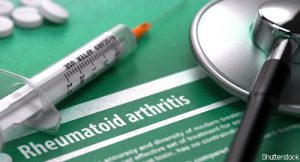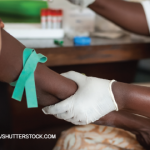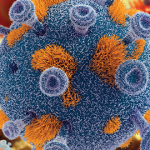 ATLANTA—A key goal for rheumatology researchers and clinicians is to predict through specific biomarkers if someone will, at some point in their future, develop rheumatoid arthritis (RA). If so, the disease could be prevented or stopped before the inflammation and ravaging begins, explained researchers during a Basic Science lecture at the 2019 ACR/ARP Annual Meeting titled Tipping the Balance from Preclinical Autoimmunity to Overt RA.
ATLANTA—A key goal for rheumatology researchers and clinicians is to predict through specific biomarkers if someone will, at some point in their future, develop rheumatoid arthritis (RA). If so, the disease could be prevented or stopped before the inflammation and ravaging begins, explained researchers during a Basic Science lecture at the 2019 ACR/ARP Annual Meeting titled Tipping the Balance from Preclinical Autoimmunity to Overt RA.
As Georg Schett, MD, from the Department of Medicine at the University Erlangen-Nürnberg, Germany, pointed out, researchers have known for some time that anti-citrullinated protein antibodies (ACPAs) and rheumatoid factors (RFs) in patients appear many years prior to RA onset, and that immunoglobulin A (IgA) RFs also appear in patients years prior to clinical symptoms. “This suggests the body can contain autoimmunity for quite a long time before disease appears,” said Dr. Schett. “So autoimmunity does not mean we get sick. We can live with anti-nuclear antibodies [ANA] for quite a long time without disease.”
The challenge facing researchers is applying this burgeoning knowledge to effective therapies.1
Dr. Schett said some of our immune functions are locked until needed for fighting microbial triggers such as Salmonella, Staphylococcus and measles, when you need an antibody response via effector function. “However, this effector function needs to be controlled, otherwise you would die immediately because you would be inflamed all the time,” Dr. Schett said. “[Unfortunately], it’s not totally clear at this time how this locking of autoimmunity works.”
One concept, explained Dr. Schett, is that infections could be an important second hit for the onset of RA. During infection, he explained, the interleukin (IL) 17, IL-23 response is turned on and antibodies with effector function are activated to fight the bacteria. But at the same time, there is a continuous production of cyclic citrullinated peptides (CCP) and an anti-citrullinated protein antibody (ACPA) response. “This could explain why second-hit infections could trigger the transition from autoimmunity to clinical overt rheumatoid arthritis,” said Dr. Schett.2
Another concept being explored is impaired gastrointestinal (GI) function leading to arthritis onset. In this leaky gut scenario, activated immune cells transition into the joints. Dr. Schett said so far this has only been tested on Kaede mice using photo conversion after ultraviolet light exposure.3 Using a collagen-induced arthritis model, cell movement can be tracked, displaying the photo-converted T cells moving into the spleen and lymph nodes, but predominantly into the joints. Dr. Schett said researchers were able to restore the GI epithelial barrier function by administering larazotide acetate.



